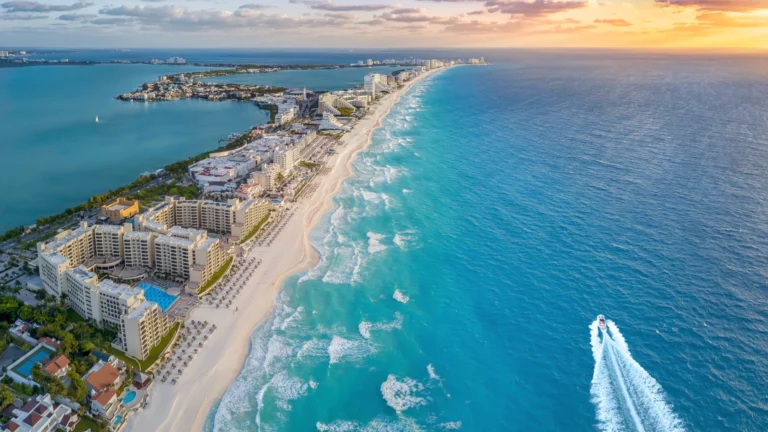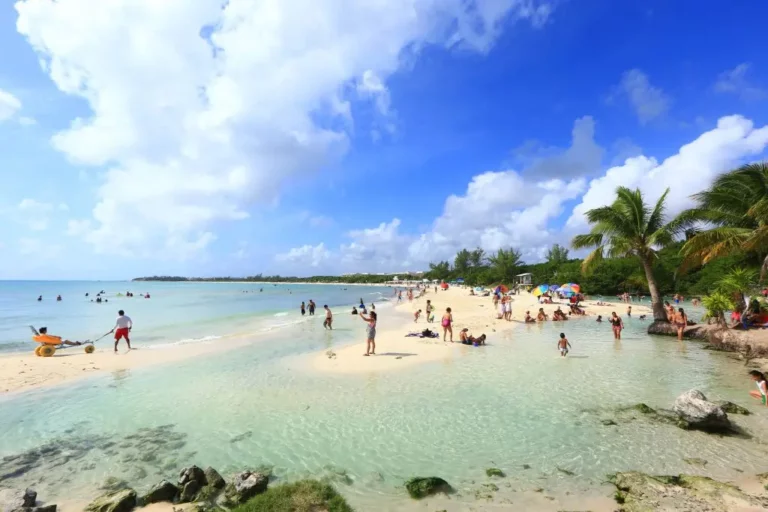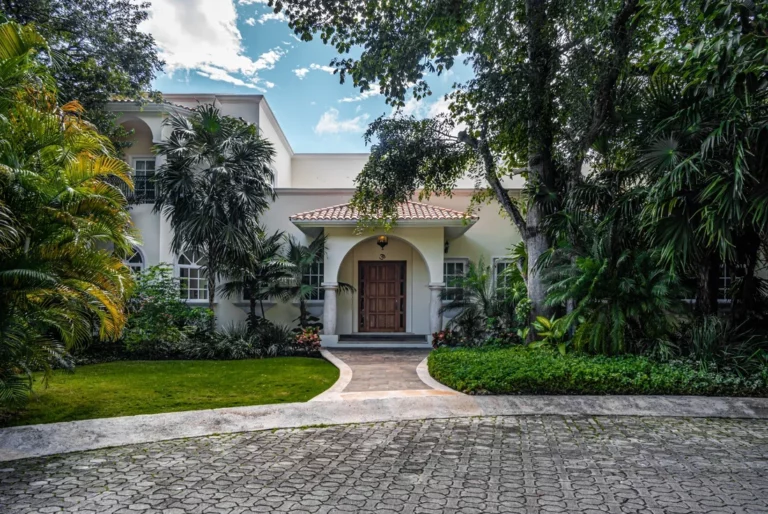If you’re an American planning a trip to Mexico, you’ll likely encounter situations where knowing some basic Mexican Spanish phrases can make all the difference. Even if you’re not fluent in the language, being able to communicate effectively in Spanish can help you navigate the country with more ease and confidence, as well as connect with locals and learn more about the local culture.
Here are some easy Mexican Spanish phrases to get you started:
Greetings and Introductions
- Hola (hello) – Pronounced “OH-lah”
- Buenos días (good morning) – Pronounced “BWAY-nos DEE-as”
- Buenas tardes (good afternoon/evening) – Pronounced “BWAY-nas TAR-des”
- ¿Cómo estás? (how are you?) – Pronounced “KOH-moh es-TAS?”
- Mucho gusto (nice to meet you) – Pronounced “MOO-cho GOOS-to”
Here’s a practical example of using these basic phrases in a conversation:
You arrive at a restaurant in Mexico and the waiter approaches you.
Waiter: Hola, ¿cómo están? (Hello, how are you all?)
You: Hola, estamos bien. (Hello, we’re good.)
Waiter: ¿Qué desean tomar? (What would you like to drink?)
You: Queremos dos cervezas, por favor. (We would like two beers, please.)
Waiter: Perfecto, ¡mucho gusto! (Perfect, nice to meet you!)
In this example, you used “hola” to greet the waiter, “¿cómo estás?” to ask how he was, and “mucho gusto” to express your pleasure in meeting him. You also used “buenas tardes” to greet him if you arrived in the afternoon or evening.
Getting Around
- ¿Dónde está…? (where is…) – Pronounced “DON-de es-TA…”
- La calle (street) – Pronounced “la KAH-yay”
- La plaza (square) – Pronounced “la PLAH-sa”
- La estación de metro (metro station) – Pronounced “la es-ta-see-OWN day MAY-tro”
- ¿Cuánto cuesta? (how much does it cost?) – Pronounced “KWAHN-to KWAY-sta?”
- ¿Aceptan tarjeta de crédito? (do you accept credit card?) – Pronounced “a-SEP-tan tar-HAY-ta day KRAY-dee-to?”
Here are some practical examples of how to use the phrases:
- If you’re lost and need to find your way, you can ask someone “¿Dónde está la calle?” (where is the street?) or “¿Dónde está la plaza?” (where is the square?) to get directions.
- If you’re using public transportation in Mexico City, you can ask “¿Dónde está la estación de metro?” (where is the metro station?) to find the nearest subway stop.
- When shopping at a market or store, you can use “¿Cuánto cuesta?” (how much does it cost?) to ask about the price of an item you’re interested in buying.
- If you want to pay with a credit card, you can ask “¿Aceptan tarjeta de crédito?” (do you accept credit card?) before making a purchase.
- When bargaining for a better price, you can use “¿Me puede dar un descuento?” (can you give me a discount?) and negotiate a better deal.
Remember to practice these phrases regularly and don’t be afraid to make mistakes. Mexican locals will appreciate your effort to speak their language and may even help you improve your skills.
Ordering Food and Drinks
- Quiero (I want__) – Pronounced “KYAY-ro”
- La cuenta (the bill) – Pronounced “la KWEN-ta”
- Una cerveza (a beer) – Pronounced “OO-na ser-VAY-sa”
- Una margarita (a margarita) – Pronounced “OO-na mar-ga-REE-ta”
- ¿Tienen menú en inglés? (do you have an English menu?) – Pronounced “TYEN-en ME-noo en IN-glays?”
- ¡Buen provecho! (enjoy your meal!) – Pronounced “BWAYN pro-VAY-cho!”
Here are some more practical examples of how to use the phrases:
- When ordering food or drinks at a restaurant or bar, you can use “Quiero” (I want) followed by the name of the item. For example, “Quiero una cerveza” (I want a beer) or “Quiero una margarita” (I want a margarita).
- When you’re ready to pay your bill, you can ask for “La cuenta” (the bill) to be brought to you.
- If you want to know if a restaurant has an English menu, you can ask “¿Tienen menú en inglés?” (do you have an English menu?) before sitting down to eat.
- After being served your food, it’s customary to say “¡Buen provecho!” (enjoy your meal!) as a polite way to start your meal.
Remember to practice these phrases regularly and don’t be afraid to ask for clarification or help if you’re unsure of how to pronounce a word. With a little practice and effort, you’ll be able to communicate effectively in Mexican Spanish and have a more enjoyable travel experience.
Shopping and Bargaining
- ¿Cuánto cuesta? (how much does it cost?) – Pronounced “KWAHN-to KWAY-sta?”
- Demasiado caro (too expensive) – Pronounced “day-ma-SYA-do KAR-o”
- ¿Me puede dar un descuento? (can you give me a discount?) – Pronounced “may PWAY-day dar oon day-SKOWN-to?”
- Me lo llevo (I’ll take it) – Pronounced “may lo YAY-vo”
- No gracias (no, thank you) – Pronounced “no GRA-see-yas”
Here are practical examples of using the phrases in everyday situations:
- “¿Dónde está el baño?” – If you need to use the restroom, you can ask a local “¿Dónde está el baño?” and they will likely direct you to the nearest one.
- “Una cerveza, por favor” – When you’re at a bar or restaurant, you can order a beer by saying “Una cerveza, por favor.”
- “¿Cuánto cuesta esta camisa?” – If you’re shopping for clothes and want to know the price of a shirt, you can ask “¿Cuánto cuesta esta camisa?”
- “Demasiado caro” – If you think the price of an item is too expensive, you can say “Demasiado caro” to try to negotiate a lower price.
- “¡Buen provecho!” – When you’re eating a meal with others, it’s polite to say “¡Buen provecho!” as a way of wishing them a good meal.
- “Me lo llevo” – If you’ve decided to buy an item, you can say “Me lo llevo” to let the vendor know that you’ll take it.
- “No gracias” – If you’re not interested in a product or service, you can simply say “No gracias” to decline the offer.
By practicing these phrases, you’ll be able to communicate more effectively with locals in Mexico and have a more enjoyable travel experience. Remember to speak slowly and clearly, and don’t be afraid to ask for help or clarification if you need it.
Emergencies and Basic Needs
- Ayuda (help) – Pronounced “a-YOU-da”
- Necesito un médico (I need a doctor) – Pronounced “ne-se-SEE-to oon MAY-dee-ko”
- ¿Dónde está el baño? (where is the bathroom?) – Pronounced “DON-de es-TA el BAN-yo?”
- Agua (water) – Pronounced “A-gwa”
- Gracias (thank you) – Pronounced “GRA-see-yas”
Practical examples of using these phrases in Mexican Spanish are:
- “¡Ayuda! Me robaron la cartera.” (Help! Someone stole my wallet.)
- “Necesito un médico, tengo un dolor de cabeza muy fuerte.” (I need a doctor, I have a very strong headache.)
- “Disculpe, ¿dónde está el baño?” (Excuse me, where is the bathroom?)
- “¿Puede traerme un vaso de agua, por favor?” (Can you bring me a glass of water, please?)
- “Gracias por su ayuda.” (Thank you for your help.)
Practice Makes Perfect
The key to mastering these phrases is to practice them regularly. Start by learning a few basic phrases and gradually add more to your repertoire. Listen to how native speakers pronounce words and try to mimic their intonation and rhythm. Don’t be afraid to make mistakes and ask for help. Mexicans are generally friendly and helpful to foreigners who make an effort to speak their language.
In conclusion, learning a few basic Mexican Spanish phrases can greatly enhance your travel experience and help you connect with the local culture. Practice regularly, be patient with yourself, and don’t be afraid to step out of your comfort zone. ¡Buena suerte! (good luck!)








